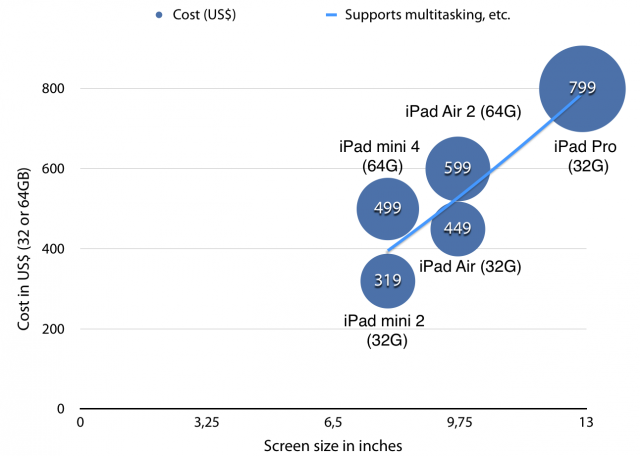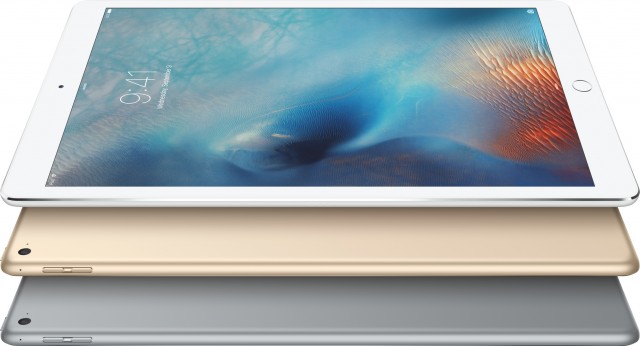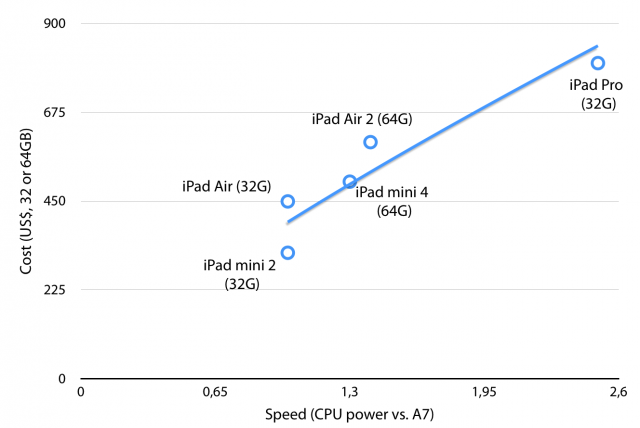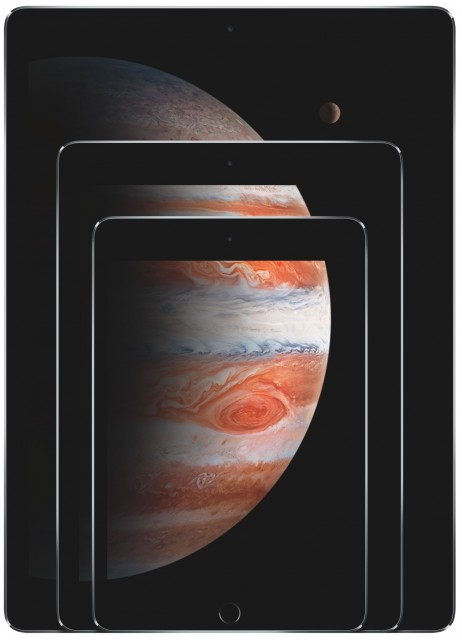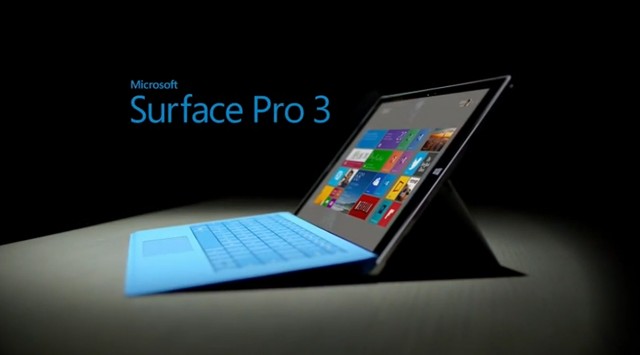The iPad isn’t just a gadget any more. There’s now enough of an app ecosystem that investing in an iPad is investing in a creative platform that turns into lots of other things. That is, it really is like another computer.
For music, that means a lot. An iPad is a drum machine, or a vocal processor. It’s a practice aid, a simulated guitar amp. It’s an extension of your desktop music software, too, whether controlling instruments and transport in Logic or live sets in Ableton. It’s a DJ tool.
Of course, the same is true of a computer. And with computers and hardware (keyboards, stompboxes, Eurorack) competing for your wallet’s attention, the iPad has to justify itself. What it isn’t – which it is for a lot of the general public – is just a window through which you watch Orange is the New Black on Netflix. And so, if the tablet is plateauing for the general public, there is a reason to think the iPad means something different to a creative person.
Apple must think so, too, given it just unveiled a top-of-range iPad called “Pro.” But here’s the trick to it: the iPad Pro is turning out to be really an iPad Big. The introduction of fancy exclusive accessories (Pencil and a keyboard cover) disguise the fact that you can get similar accessories from third parties for less.
No, Apple has really evened out the iPad line. And that means what you’re really buying is two things: size and speed. I’ve put together some rough charts (in Apple Numbers, natch) to demonstrate just that.
What the lineup has in common…
Each iPad in the current line has a Retina Display. (The iPad Pro bumps the resolution to 2732×2048, which developers will have to support, but screen density stays the same.) Each has the same Lightning port. Each has the same basic underlying 64-bit architecture. Each has the same aspect ratio (cough, Android).
There’s one generational difference. The iPad Air 2, iPad mini 4, and iPad Pro all have a new laminated, antireflective display that should look a bit better, a fingerprint reader that’s a whole lot more secure and convenient, and newer-generation processors. They also have true, side-by-side multitasking – what Apple calls Split View. Not even all developers I’ve talked to agree, but I think that’ll be a big boon to productivity in music production. (The other current models do support a Slide Over mode.)
So, which should you get?
That depends on what you want. I’ve made some handy charts.
I had to cheat a little. I think no one should buy a 16GB iPad – you won’t even have enough room for your apps, and if you’re a musician, you’re also likely to need some audio. 32GB for most applications is fine, because at some point, you’re probably tethering to a computer. Depending on model, either a 32GB or 64GB model is what’s available as what I think ought to be the entry level. (If you intend to DJ with an iPad, or record a lot of audio, then maybe a 128GB model makes sense – just be ready to pay for it).
In the first chart, you see screen size versus cost (relative speed is represented by circle size). And you see that screen size is what you really pay for. The trend line – and that’s a real power-based trend line – also clearly delineates the generational gap I mentioned earlier.
If speed is your main priority, well – you’ll get the iPad Pro. It’s an order of magnitude faster than the others, which in music could have big implications for people who want their whole workflow on the iPad. It means you can multitask and use Audiobus and not run out of steam. On the other hand, budgeting a little extra for the new generation in the smaller sizes also gives you more computing room, if you can’t stomach the Pro (or can’t wait until November):
What I think is most interesting is how much you pay for screen size. Personally, I love the mini. It has the highest screen density of any iPad, so it looks terrific. Basically, any app will run on it. It’s all down to the size of your hands – but that ultra-compact size means it’s easier to carry and easier to fit into a stage rig and easier to hold in your hand. And it unquestionably delivers the most performance for money.
In fact, to me, the sweet spot right now is the new 64GB iPad mini 4. It does multitasking, it’s really reasonably fast with an A8 processor, and it’s not so hard to afford. But… I have small hands and I like things to be small, so I expect that iPad Air (the original) will also look like a good entry point to a lot of people.
Here’s how the three stack up visually (photo courtesy Apple):
Enter the Pro
On the other hand, you also see that the iPad Pro could be a great lasting investment. And I think it’s going to wind up being a hit with musicians for an unexpected reason.
A lot of musicians still have older iPads banging around. That means they’ve been saving up. A single machine gives them everything – a vastly-faster processor that keeps up with laptops, a huge screen, true multitasking (and a screen where it makes sense), and all the latest hardware enhancements Apple has gradually worked out over the years. Update: RAM – I should also observe that it almost certainly has 4GB of RAM, which is more typical in Androidland but new to iOS, and very useful. It’s brutally expensive for a tablet, of course, but the reality is that a lot of laptops are doing just fine, so I could see people investing in this and delaying the laptop purchase. I have no doubt this is going to cannibalize sales of Mac (and PC) laptops, not as a replacement, but because those machines are doing just fine.
And all of this means the iPad line is starting to look more appealing to app developers. Unlike other markets, musicians have been happy to spend $40 or $50 for an app if they really want it. And they’ve also been willing to use apps that do less but focus more on iOS than the feature-overloaded desktop counterparts.
Will developers immediately start investing huge amounts of resources in this? Of course not.
But two things will happen: one, developers are all going to be buying iPads Pro for themselves, and trying them out, and two, since it isn’t much work to port existing iOS apps to a new screen resolution, you’ll see some app updates. And beyond that, who knows.
And the competition…
While I’m breaking down iPad value, don’t think for a second that I think this diminishes the PC as we traditionally know it.
I wonder if Microsoft’s Surface and the PC touch ilk will see some new attention. The main problem there is a lack of touch-driven apps. But now that it’s clear Apple sees iPads as things with touch and MacBooks as things without, maybe more developers will experiment on the PC. I also think touch machines on the PC side are reaching a critical mass to support an ecosystem – though it needs a lot more support from Microsoft, and supporting developers and pros is clearly an area where Apple has an edge.
With Microsoft set to make some big announcements at the beginning of October, any Windows fans there should definitely wait. (I have to admit, I love the idea of a machine that’s a tablet that runs vvvv and FL Studio and SONAR on it, too.)
Apple did its own MacBook line a huge favor by failing to add a new port to the Pro (like the expected USB-C port). The iPad Pro simply can’t stand on its own – literally or figuratively (cough, kickstand). Even in the new big size, it’s still going to be a satellite to a laptop for most people. Laptops remain faster for the money, they still have more storage and expandability and configurability, and they’re still necessary for our most essential apps.
It just might be that you squeeze life out of your desktop PCs and laptops a little longer and see if you can budget for that iPad Pro. Though… wait, look at this synthesizer…
Data courtesy Apple; find more comparisons on their new site (just without my graphical aids):
http://www.apple.com/ipad/compare/
